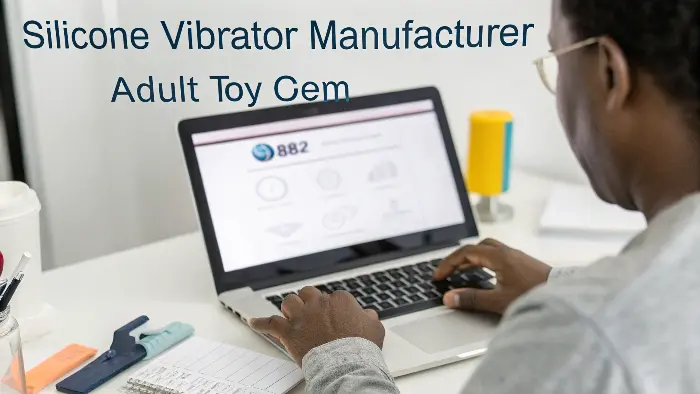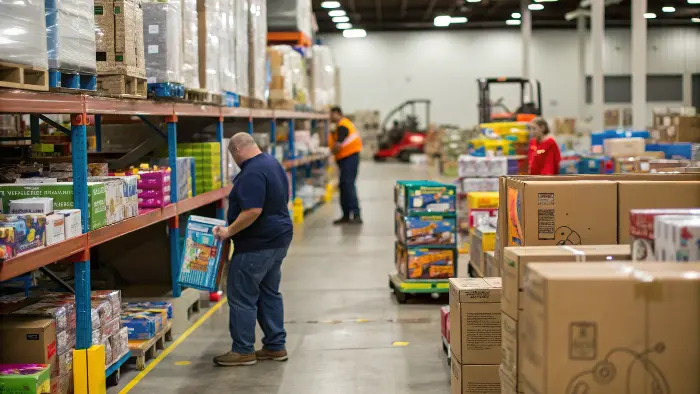Are you trying to grow your adult product brand but hitting a wall finding reliable wholesalers? This constant search is frustrating and wastes valuable time, leading to stock issues and missed opportunities. I’ve been there, and I’ll share the exact methods I use to find and vet the best partners for my business.
There isn’t one single master list of adult sex toy wholesalers. The best approach is a combination of methods: using online B2B platforms like Alibaba, attending industry trade shows like ANME or XBIZ, and networking within professional groups on LinkedIn. For more control over design, quality, and cost, partnering directly with a manufacturer like us at PrivyPlay is often the most effective strategy for a growing brand.

You now know the general places to look for suppliers. But that’s just the first step. The real challenge is turning a long list of potential names into a short list of reliable, trustworthy partners who can help you grow. It requires a clear strategy to filter out the noise and identify the gems. Let’s break down the specific actions you can take to build your supply chain with confidence.
How to search for suppliers?
You type "sex toy supplier" into Google and get a million results, most of which are retail sites or sketchy-looking directories. It feels impossible to cut through the clutter and find legitimate B2B partners who understand your needs. I’ll show you how to refine your search to get real results that lead to quality connections.
To effectively search for suppliers, use specific, professional keywords on B2B platforms like Alibaba and Global Sources. Use terms like "silicone vibrator manufacturer," "adult toy OEM," or "private label pleasure products." Also, explore industry-specific forums and LinkedIn groups. These targeted searches filter out the retail noise and connect you directly with actual manufacturers and wholesalers who are looking for partners like you.

Finding the right search terms is your starting point. Once you have a list of potential suppliers, the real work of vetting them begins. You need to dig deeper to understand who they are and if they are the right fit for your brand’s specific needs. This involves looking beyond their marketing materials and analyzing their actual business operations and relationships.
Mastering B2B Platform Keywords
The words you use in your search determine the quality of your results. Using generic terms will give you generic, often useless, results. You need to speak the language of the industry. Understanding the difference between terms like "wholesaler," "manufacturer," and "OEM" is critical. A wholesaler resells existing products, while a manufacturer creates them. OEM (Original Equipment Manufacturer) means they make a product to your specifications that you can brand as your own.
Here’s a simple table to guide your searches:
| Your Goal | Best Keywords to Use |
|---|---|
| Resell existing, branded products | "adult toy distributor," "[Brand Name] wholesaler" |
| Create your own branded version of an existing design | "sex toy OEM," "private label vibrator" |
| Develop a completely new, unique product | "custom sex toy ODM," "adult product manufacturer" |
| Find raw material or component suppliers | "medical-grade silicone supplier," "micromotor for toys" |
Leveraging Professional Networks
Your best leads often come from other people. LinkedIn is an invaluable tool. You can search for titles like "Purchasing Manager" or "Founder" at other wellness or adult brands. See who they are connected to. Join industry-specific groups on LinkedIn and even Facebook. Don’t just jump in and ask for lists. Instead, participate in discussions, offer your own insights, and build relationships. You can then ask for recommendations more naturally. I’ve found some of my most reliable partners through quiet conversations with other brand owners in these groups.
Analyzing Competitor Supply Chains
Want to know who makes products for a brand you admire? Sometimes the answer is right in front of you. Look at their packaging for "Made in…" information. For a more powerful approach, use online import/export databases like ImportYeti. You can search for your competitor’s company name as the "importer." The database will often show you a list of their suppliers (the "shippers") from Bills of Lading. This gives you a pre-vetted list of factories that are already producing quality products for your market.
How to find toy suppliers?
You have some search terms and a few names, but how do you turn a name on a screen into a trusted partner? The risk of scams, poor quality products, and communication breakdowns is very real and can sink a growing business. Let’s build a systematic process to find and qualify suppliers you can actually depend on.
Finding reliable toy suppliers involves a multi-step process. Start with online research on B2B sites and trade show directories. Then, you must vet potential partners by requesting samples, checking their business licenses and quality certifications (like CE, RoHS), and conducting video calls to see their factory. Attending industry trade shows in person remains one of the most effective ways to build strong, direct relationships.

A systematic approach removes guesswork and reduces risk. It’s about creating a repeatable process that you can use every time you need to evaluate a new potential partner. This process should cover everything from initial contact to final selection, ensuring you check all the important boxes along the way. Let’s dive into the key components of a robust supplier vetting system.
The Power of Industry Trade Shows
Nothing beats a face-to-face meeting. Trade shows are where the entire industry gathers, and they are your single best opportunity to find and vet dozens of suppliers in just a few days. Key shows to know are ANME (Adult Novelty Manufacturers Expo) in the US, the XBIZ Conference, and the ETO Show in Europe. In China, the Canton Fair is massive and has sections for health products. At a trade show, you can hold the products, inspect the quality firsthand, and meet the team you’ll be working with. I remember at my first ANME, I met a factory owner who became a key partner for years. That five-minute conversation was more valuable than a hundred emails.
Your Supplier Vetting Checklist
Before you commit to any supplier, you need to do your homework. Create a checklist and stick to it.
- Company Verification: Ask for their business license and any export licenses.
- Certifications: Request copies of quality and safety certifications like ISO, CE, and RoHS. This shows they meet international standards.
- Order Samples: Always order samples. Pay for them—it shows you’re a serious buyer. Test them thoroughly.
- Communication: How responsive and clear are they in their emails and calls? Do they understand your questions?
- Factory Tour: Ask for a live video call to tour their facility. It’s a red flag if they refuse.
- References: Ask for references from other customers in a non-competing market, like Europe if you’re in the US.
Distributor vs. Direct-from-Factory
You have two main sourcing options, and the right choice depends on your business model.
| Sourcing Method | Pros | Cons |
|---|---|---|
| Distributor | Lower MOQs, faster shipping (if domestic), wide variety of brands. | Higher unit cost, no product customization, you’re just a reseller. |
| Direct from Factory | Lower unit cost, full control over design (OEM/ODM), higher profit margins. | Higher MOQs, longer lead times, requires more hands-on management. |
For new brands, starting with a distributor can make sense. But to build a truly unique and profitable brand, you eventually need to work directly with a factory. That’s where partners like us, PrivyPlay, come in. We offer the control and quality of direct manufacturing, but with the support and communication that brand owners need.
Who is the biggest toy distributor?
You might think that finding the "biggest" distributor will solve all your sourcing problems, assuming they have the best prices and the widest selection. But "biggest" often means you’ll be a small fish in a huge pond, getting impersonal service and the same generic products as everyone else. Let’s reframe this question to find the best partner for your brand.
While companies like Doc Johnson, Pipedream Products, and CalExotics are among the largest and most well-known adult toy distributors, especially in the US, the "biggest" isn’t always the "best" for your brand. Your ideal partner depends on your specific needs, such as custom products, low MOQs, or a focus on a particular niche. Focusing on finding a supplier that aligns with your business goals is far more important than just chasing size.

The allure of working with a massive, established player is understandable. It feels safe. But safety can come at the cost of flexibility, attention, and ultimately, profitability. The largest companies are built to serve the largest customers. For a growing brand that needs a responsive and adaptable partner, looking beyond the biggest names is often the smartest move.
Understanding the Major Players
The landscape of adult product distribution is dominated by a few key names, especially in North America. Companies like Doc Johnson, Pipedream, and CalExotics are giants. They manufacture many of their own products and also distribute for other brands. They have massive catalogs and extensive logistics networks. Another major player is an online retailer and distributor that has acquired several other brands over the years. These companies are experts in large-scale logistics and supplying thousands of retail stores. They are the backbone of the traditional retail side of the industry.
Why "Biggest" Can Be a Disadvantage
For a growing e-commerce brand, partnering with the biggest distributor can have significant downsides.
- Impersonal Service: You’ll likely be a small account number to them. Getting dedicated support or quick resolutions can be difficult.
- High MOQs: They are built for volume. Their minimum order quantities might be too high for you to manage your cash flow effectively.
- Lack of Flexibility: They sell what’s in their catalog. There is little to no room for product customization or creating something unique for your brand.
- You’re Competing with Them: Often, these distributors have their own house brands that they prioritize. You’re buying from them while also competing against them.
Finding Your "Right-Sized" Partner
Instead of asking "who is the biggest," ask "who is the best fit for me?" First, define your needs. Then, find a partner who meets them.
| If you need… | Then you should look for… |
|---|---|
| Low MOQs and fast domestic shipping | A smaller, regional distributor who values your business. |
| A wide variety of existing brands to resell | One of the large national distributors. |
| Custom designs and the best unit price | A direct-to-factory manufacturer (like us at PrivyPlay). |
| Specialized or niche products (e.g., BDSM gear) | A specialty distributor focused on that category. |
This approach shifts the power back to you. You’re not just accepting what the biggest player offers; you’re actively choosing a partner who will help you achieve your specific business goals. For brands focused on quality and uniqueness, that partner is almost always a direct manufacturer.
Who is the biggest importer of toys?
You’re digging into import data, trying to find the top players so you can emulate their success. But this data can be misleading, showing massive volume without any context. You might end up chasing a giant who has no interest in working with a growing brand like yours, wasting your time and effort.
The biggest importers of adult toys are typically the large brand owners and distributors themselves, such as Doc Johnson or the parent companies of major online retailers like Lovehoney. However, this information is less useful for a growing brand. Instead of focusing on the biggest, you should use import data tools to analyze the suppliers of brands that are similar in size and niche to your own, giving you a more relevant list of potential partners.

The raw data of who imports the most containers is just a number. It doesn’t tell you about the quality of the products, the reliability of the supplier, or the nature of the business relationship. For a sourcing manager or brand owner, the real value in import data isn’t finding the biggest fish; it’s discovering the specific, high-quality suppliers that are helping brands like yours succeed.
How to Interpret Import Data
When you look at import records, you’re typically seeing data from a Bill of Lading. This document lists the shipper (the supplier/factory), the consignee (the importer/your competitor), and a description of the goods. Be aware that these descriptions are often intentionally vague to protect business intelligence. You’ll see terms like "personal massagers," "silicone products," or "plastic novelties." The key is to not get fixated on the product description but to focus on the names of the shipper and the importer. This connection is the valuable piece of information. Remember, the volume of shipments doesn’t tell you anything about the quality of the products or the strength of the partnership.
A Practical Guide to Using Import Data Tools
Let’s walk through a practical example using a tool like ImportYeti or Panjiva.
- Identify a Target Brand: Choose a brand that you admire. Pick one that is maybe a few steps ahead of you, not a massive corporation. Let’s call them "Glow Wellness."
- Search the Importer: In the tool’s search bar, type "Glow Wellness" as the importer or consignee.
- Analyze the Results: The tool will show you a list of shipments to Glow Wellness. You’ll see the names of their suppliers in the "Shipper" column. You might find they import from "Shenzhen Happy Products Co."
- Create a Lead List: Now you have a lead. "Shenzhen Happy Products Co." is a factory that is already producing goods for the US or European market and is working with a brand in your niche. Repeat this process for several similar brands. You now have a highly qualified list of potential factories to contact.
Moving from Data to a Conversation
Once you have a supplier’s name from your research, how do you approach them? Don’t just send an email saying, "I see you supply Glow Wellness, can I get a price list?" That’s unprofessional and will likely be ignored. Instead, approach them with respect for their existing relationships.
- Introduce Your Brand: Start by introducing your company and your vision.
- Explain Your Needs: Clearly state what kind of products you’re looking to develop.
- Show You’ve Done Research: You can say something like, "I admire the quality of products you manufacture for the international market and believe you could be a great partner for us."
- Ask About Their Process: Inquire about their process for working with new brands, their OEM/ODM capabilities, and their MOQs.
This professional approach shows you are a serious business owner and positions you as a potential long-term partner, not just a bargain hunter.
What is the most profitable toy company?
You see huge companies in our industry and dream of their profit margins, thinking their business model is the one to copy. But chasing someone else’s definition of success can lead you down the wrong path, focusing on volume over value. The real question isn’t who is most profitable, but how you can make your company more profitable.
Publicly traded companies like LELO’s parent company, LELOi AB, or the Lovehoney Group are known to be highly profitable. However, true profitability for your brand comes from strong margins, not just high revenue. This is achieved by controlling costs through direct manufacturing, building a strong brand that commands premium prices, and focusing on superior product quality to ensure customer loyalty and repeat business.

Profitability is the lifeblood of your business. It’s what allows you to reinvest in new products, marketing, and growth. But simply chasing revenue can be a trap. A business with $10 million in revenue and a 5% profit margin is less healthy than a business with $2 million in revenue and a 40% profit margin. For independent brand owners, the path to sustainable profitability is almost always through building a high-margin business.
The Two Paths to Profitability: Volume vs. Margin
In any industry, there are two fundamental ways to build a profitable business.
- The Volume Model: This is the game played by the big distributors and mass-market retailers. Their goal is to sell a massive number of units with a very thin profit margin on each one. This model requires enormous scale, huge warehouses, and complex logistics to work. It’s a very difficult game for a smaller brand to win.
- The Margin Model: This is the path for boutique and premium brands. The goal is to sell fewer items but at a much higher profit margin per item. This is achieved by creating a product and brand that customers are willing to pay more for. This is where your power lies as a growing brand owner. Your focus should be on creating value that justifies a premium price.
How Sourcing Directly Impacts Your Bottom Line
Your sourcing strategy is directly tied to your potential for profit. The choice between using a distributor and working with a factory has a massive impact on your margins.
| Sourcing Method | Unit Cost | Control over Quality | Branding Potential | Profit Margin |
|---|---|---|---|---|
| Distributor | High | Low | Low (you’re a reseller) | Lower |
| Direct Manufacturer | Low | High | High (OEM/ODM) | Higher |
As you can see, working directly with a manufacturer like PrivyPlay cuts out the middleman, which dramatically lowers your cost per unit. This single change can be the difference between a low-margin business that struggles to grow and a high-margin business that thrives. This extra margin gives you the cash flow to invest in marketing, develop new products, and build a lasting brand.
Building a Brand, Not Just Selling a Product
In the end, the most profitable companies are strong brands. Profit isn’t just about what you sell; it’s about why customers choose to buy from you instead of the countless other options. A strong brand is built on trust, quality, and a unique identity. Working directly with a manufacturer gives you the tools to build that brand. You can create custom designs that no one else has. You can choose high-quality, body-safe materials. You can ensure every product that goes out the door meets your high standards. This commitment to quality is what builds customer loyalty and allows you to command the premium prices that lead to real, sustainable profitability.
Conclusion
Finding the right wholesale or manufacturing partner isn’t about discovering a secret list. It’s about implementing a smart, repeatable process. This involves targeted research, thorough vetting, and choosing the right type of partner for your specific goals. Ultimately, building a profitable, lasting brand starts with laying a solid foundation in your supply chain.
